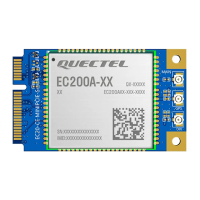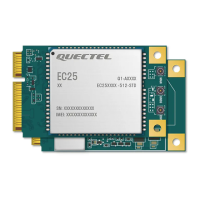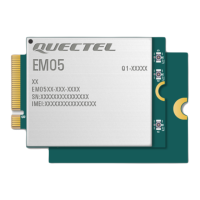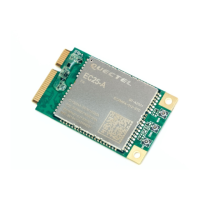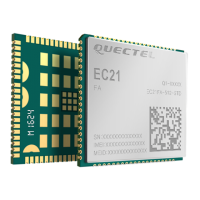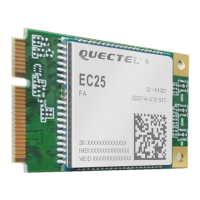LTE Standard Module Series
EC200U_Series_Hardware_Design 42 / 94
extra stubs of trace must be as short as possible.
The following principles should be complied with when designing the USB interface, so as to meet USB
2.0 specification.
⚫ Route the USB signal traces as differential pairs with ground surrounded. The impedance of USB
differential trace is 90 Ω.
⚫ Do not route signal traces under crystals, oscillators, magnetic device and RF signal traces. It is
recommended to route the USB differential traces in inner-layer of the PCB and to surround the
traces with ground on that layer and with ground planes above and below.
⚫ Pay attention to the influence of junction capacitance of ESD protection components on USB data
lines. Typically, the capacitance value should be less than 2.0 pF, and keep the ESD protection
components to the USB connector as close as possible.
3.10. UART Interfaces
The module provides three UART interfaces: the main UART interface, the debug UART interface and
auxiliary UART Interface. The following shows their features.
⚫ Main UART interface: The main UART interface supports 4800, 9600, 19200, 38400, 57600, 115200,
230400, 460800 and 921600 bps baud rates, and the default is 115200 bps. This interface is used for
data transmission and AT command communication and supports RTS and CTS hardware flow
control.
⚫ Debug UART interface: Only supports 921600 bps baud rate, used for the output of partial logs.
⚫ Auxiliary UART Interface
Table 15: Pin Definition of Main UART Interface
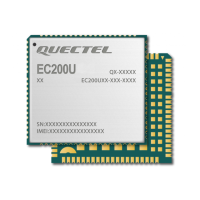
